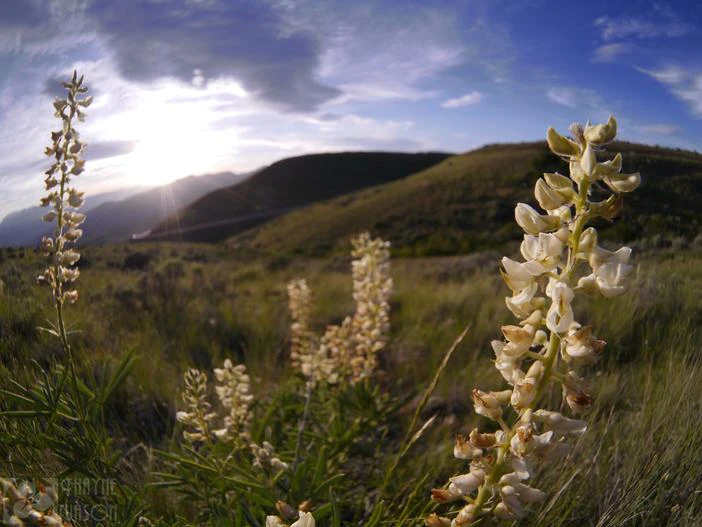Longspur Lupine
(Lupinus arbustus subsp. calcaratus)
Longspur Lupine (Lupinus arbustus subsp. calcaratus)
/
/

Thayne Tuason
CC BY 4.0
Image By:
Thayne Tuason
Recorded By:
Copyright:
CC BY 4.0
Copyright Notice:
Photo by: Thayne Tuason | License Type: CC BY 4.0 | License URL: https://creativecommons.org/licenses/by/4.0 | Uploader: ThayneT | Publisher: Wikipedia Commons

Estimated Native Range
Climate Requirements for Deer Park, New York
| This Plant | Your Site | Plant Suitability for Your Location | ||
|---|---|---|---|---|
| • Precipitation | 7" - 54" | 42" | Aquatic | Aquatic |
| • High Temp. | 67°F - 98°F | 82°F | Your summer temperatures are normal for this plant. | Excellent |
| • Low Temp. | 3°F - 35°F | 24°F | Your winter temperatures are normal for this plant | Excellent |
This plant may not grow well at your location - your precipitation is too high.
Summary
Lupinus arbustus subsp. calcaratus, commonly known as Longspur Lupine, Spur Lupine, Lime Ridge Lupine, or Quakerbonnet Lupine, is a perennial herb native to the Western United States, including regions such as the Cascade Range and the Sierra Nevada. It is typically found in open woodlands, meadows, and chaparral environments. This lupine species exhibits a rapid growth rate and reaches a height of 1.5-3 feet (0.46-0.9 meters) with a width of 1-2 feet (0.3-0.6 meters). It forms upright stems with palmately compound leaves and produces racemes of blue or purple flowers that are highly showy, blooming profusely in the spring and early summer.
The Longspur Lupine is valued for its vibrant flowers and ability to attract pollinators such as bees and butterflies, making it a popular choice for native plant gardens, pollinator gardens, and restoration projects. It is drought-tolerant once established, requiring low amounts of water, and thrives in full sun to part shade. It is adaptable to a range of soil types, including clay, loam, and sandy soils, provided they have medium to fast drainage. While generally low-maintenance, it can be susceptible to fungal diseases in overly moist conditions. Gardeners should also be aware that lupines can be toxic to livestock and pets if ingested.CC BY-SA 4.0
The Longspur Lupine is valued for its vibrant flowers and ability to attract pollinators such as bees and butterflies, making it a popular choice for native plant gardens, pollinator gardens, and restoration projects. It is drought-tolerant once established, requiring low amounts of water, and thrives in full sun to part shade. It is adaptable to a range of soil types, including clay, loam, and sandy soils, provided they have medium to fast drainage. While generally low-maintenance, it can be susceptible to fungal diseases in overly moist conditions. Gardeners should also be aware that lupines can be toxic to livestock and pets if ingested.CC BY-SA 4.0
Plant Description
- Plant Type: Shrub
- Height: 1.5-3 feet
- Width: 1-2 feet
- Growth Rate: Rapid
- Flower Color: White
- Flowering Season: Spring, Summer
- Leaf Retention: Deciduous
Growth Requirements
- Sun: Full Sun, Part Shade
- Water: Low
- Drainage: Medium, Fast
Common Uses
Butterfly Garden, Deer Resistant, Drought Tolerant, Low Maintenance, Showy Flowers
Natural Habitat
native to the Western United States, including regions such as the Cascade Range and the Sierra Nevada
Other Names
Common Names: Spur lupine, Lime Ridge Lupine, Quakerbonnet Lupine
Scientific Names: Lupinus arbustus subsp. calcaratus, Lupinus arbustus var. calcaratus, Lupinus arbustus var. calcaratus, Lupinus calcaratus, Lupinus geraniophilus, Lupinus graciliflorus, Lupinus gratus, Lupinus laxiflorus, Lupinus laxiflorus var. calcaratus
GBIF Accepted Name: Lupinus arbustus subsp. calcaratus